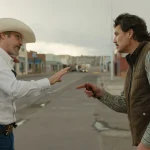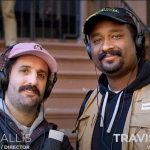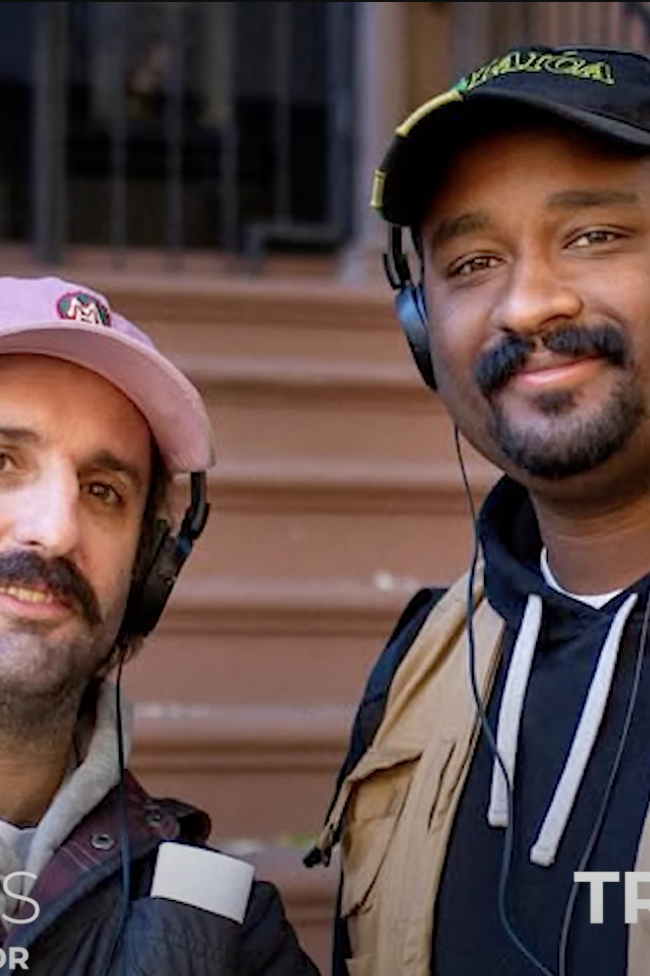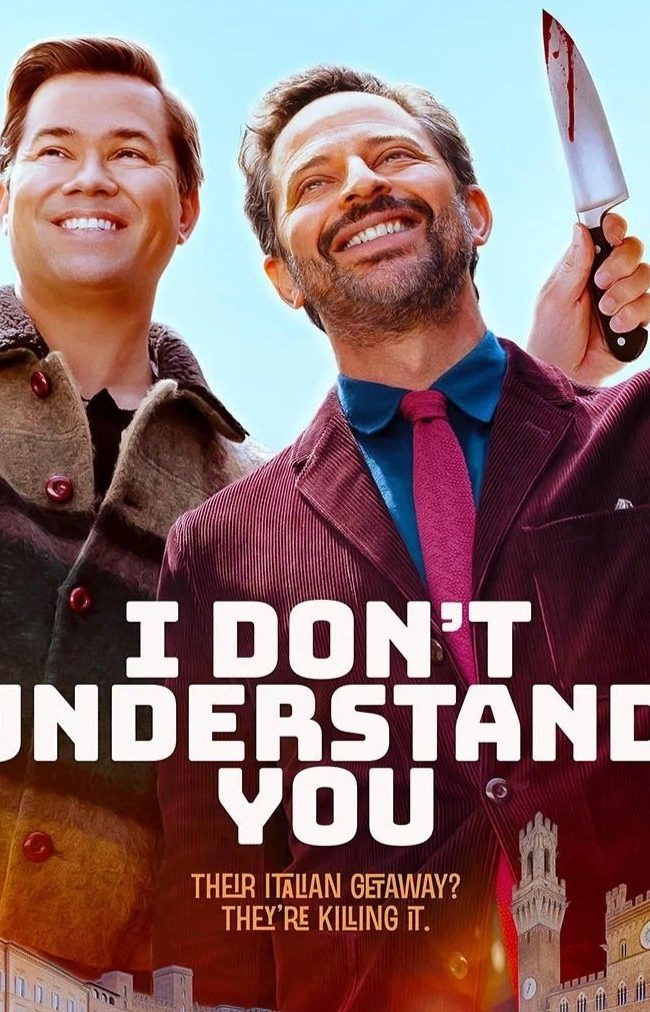A Conversation with Sav Rodgers (CHASING CHASING AMY)
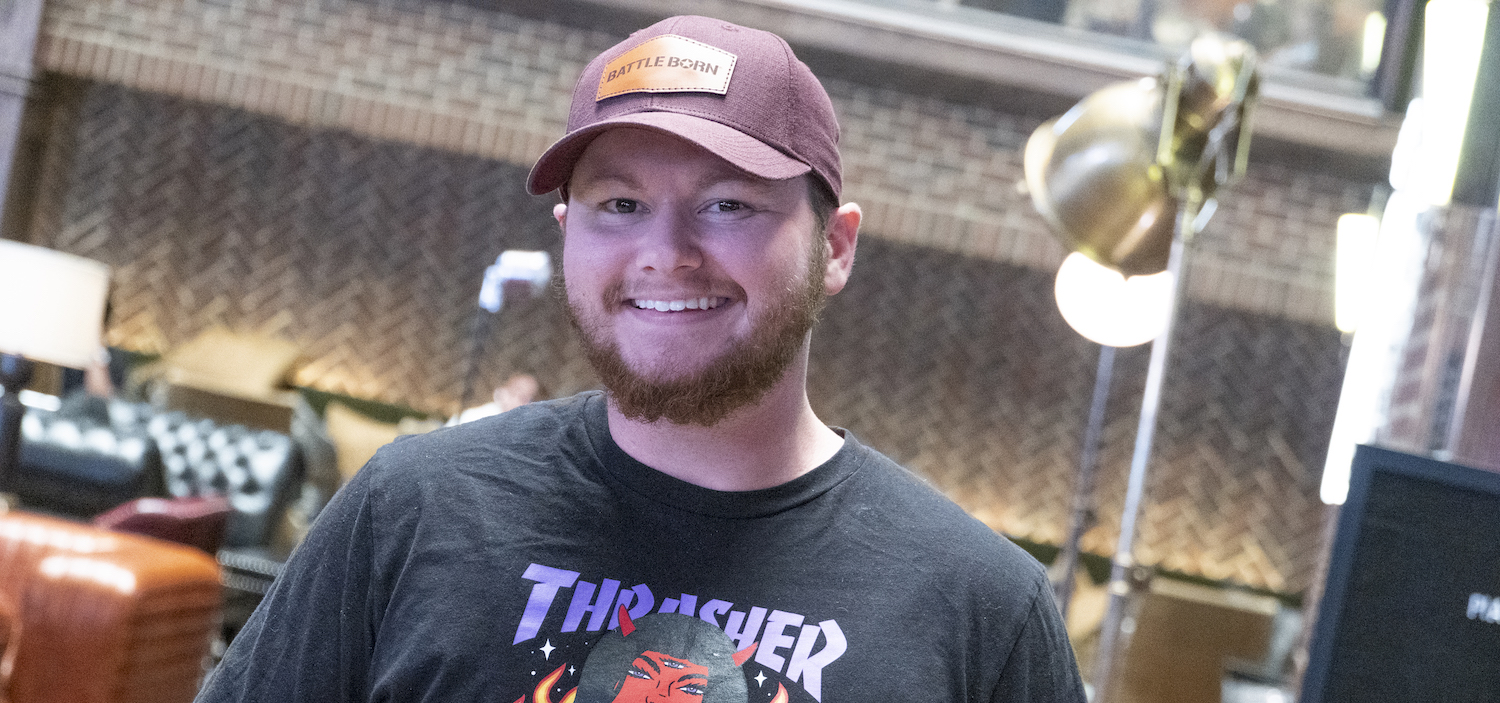
Director Sav Rodgers just premiered his documentary-feature debut, Chasing Chasing Amy, at the 2023 Tribeca Film Festival (where I reviewed it). In the film, Rodgers chronicles both his complicated love affair with Kevin Smith’s 1997 Chasing Amy—so important to him as a queer teen—and his love affair with longtime partner Riley. Thanks to a 2019 TED Talk he gave on the former subject, Rodgers attracted much-needed attention from Smith, Chasing Amy star Joey Lauren Adams, and others, all of whom bring their fascinating, often contradictory, points of view into play. It’s a great meditation on a topic I didn’t know I wanted to learn more about (was not a fan of Smith’s movie). I had an opportunity to sit down with Rodgers at Tribeca to discuss the film, and now here is that interview, edited for length and clarity.
Hammer to Nail: So, this may be your first feature as a director, but it’s not your first film, either as director or producer. What was your filmmaking experience prior to making Chasing Chasing Amy?
Sav Rodgers: Most of my filmmaking experience before Chasing Chasing Amy was a lot of either student films or crewing on filmmakers’ movies in Kansas City. And then I had some experiences doing artist fellowships and stuff like that after college. I made a short called Queen for a Day, which was my first short after college. And after that, I just really dove into Chasing Chasing Amy. But I’m used to really scrappy independent films that have no budget. And so I was thankful to be able to make something where there was a potential for it to be seen by a larger audience.
HtN: So, why Chasing Amy? I mean, even though we have more films now that describe the queer experience than when you were younger, still, you’re not that old, and there were other films to choose from. Why do you think Chasing Amy just happened to be the one that fell into your hands versus, I don’t know, The Wedding Banquet, Brokeback Mountain, or But I’m a Cheerleader, to name just three others?
SR: Well, the difference is my mom had Chasing Amy on her shelf and didn’t have any of those other movies.
HtN: Why do you think she had Chasing Amy on her shelf?
SR: My mom’s cool. She was into these late ’90s indie auteurs that managed to get mainstream wide releases. So, there was Spike Lee, and Quentin Tarantino, and Kevin Smith. She just had good taste, I think. I mean, she wasn’t exposed to queer cinema because she didn’t know what she didn’t know. So, it’s not like these movies weren’t out there. I just didn’t have them. But at the same time, you don’t get to pick the thing that resonates with you. It’s just a visceral emotional response in that way.
HtN: Well, I credit your movie for making me rethink the whole Chasing Amy experience since I wasn’t such a big fan when it came out. So, your TED Talk in 2019 and the attention it garnered really seems to have helped you with contacts, and possibly with budget. I mean, your film looks like it has really good production value. I don’t know if that’s just your cleverness or if you had some extra funding, but can you describe that process? You give the TED Talk, and then what happened?
SR: Well, after I gave the TED Talk, it gave us a huge credibility boost. It was an opportunity to have somebody else say, “Hey, you should pay attention to what this guy’s saying,” which was very much needed because again, I was just kind of fresh out of college at that time, and had only made shorts that most people hadn’t seen. And it also gave me an opportunity to hone my point of view as a storyteller, not just in narrowing the story to an eight-minute TED Talk, but to have three months of research time while at TED HQ for the program. And so, that was an amazing experience in that way.
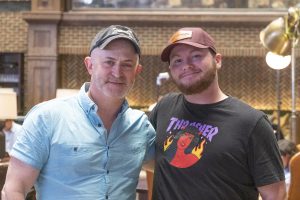
Our Chris Reed and filmmaker Sav Rodgers
So, the TED Talk comes out. Kevin sees it within an hour of it being online because enough people have sent it to him to be like, “Hey, man. Check this out.” Kevin says that he’d be in it, and he’s willing to connect me to other people who were in Chasing Amy. And it all just kind of starts to go up from there in terms of being able to continue making the movie. And the TED Talk, again, gave us a lot of credibility with prospective interviewees who didn’t know me when I had no credits to speak of on films that they hadn’t seen.
HtN: Since Kevin sees it within an hour, then he’s really the linchpin for your contacts from there?
SR: We’d been introduced to Guinevere Turner and Joey before, but Kevin was helpful in getting Jason Lee and getting some continued interest in the film, and that was very meaningful. We had reached out to Mustafa Obafemi, who played Hooper X, and he very politely declined to be in it. But I’ve kept in touch with him over the years, and he was actually at our premiere last night, which was amazing. But yeah. It was just a lot of hustle and audacity for the most part. And then, Kevin being supportive of the movie from the outset certainly didn’t hurt anything.
HtN: And he’s a really winning presence in the film. You have a lot of really other amazing people in the film, as well. You mentioned Guinevere Turner, Jason Lee. They’re all really fun, as are the critics and cultural commentators that you get. Ben Affleck, however, is not in the film. What was the process like of reaching out to people, and is there anyone you regret not being able to put in?
SR: Yeah, I mean, the process of asking people to be in the movie was a lot of cold emailing, as we did for Princess Weekes. There were some people who I already knew, like Andrew Ahn; I had met him through some connections at Outfest, and I asked a lot of people—and a lot of people who didn’t end up being in the final cut—if they would take the time to be interviewed. And I’m so grateful for all of their time and participation. It was incredibly meaningful to be able to have these conversations with folks. Some people said no. Some people said yes. Some people said maybe. I don’t think I have any regrets about people who are in it or not in it, though, just because I’m quite satisfied with the makeup of the final movie that we have. But I will say, we did reach out to Mr. Affleck, and the door is still open if he’s interested in a credits tag.
HtN: Well, maybe after he sees the film, he’ll say, “Why aren’t I in it?” Speaking of Joey, that interview with her is really fascinating. You did a great job getting her to talk about the film. Was that difficult at all? Because she’s saying some things that challenge what Kevin said. Did you struggle with keeping some of that in the film, since he is the catalyst for the movie and she’s saying things that are true but that challenge the likable presence we’ve seen of him?
SR: I set expectations with Kevin early on that not everybody who I would interview would like him. And in fact, a lot of people would have problems with Chasing Amy and a lot of people would have critiques. And he understood that from the outset, which made the process of interviewing and building a rapport with him pretty seamless. I would say, in regard to Joey’s interview, that it was difficult to be in that chair and to conduct the interview because it’s not like any research I had ever done. It was brand new information. And so, while it was vulnerable, I think any kind of feedback is a gift. And when people tell you the truth and trust you with their story, you either have to listen or you can continue doing the thing that you set out to do, even if it’s not the thing that you should be doing. And so, I’m so grateful to Joey for trusting me with her truth and her honesty and her story, and I took that responsibility really seriously, as did my colleagues.
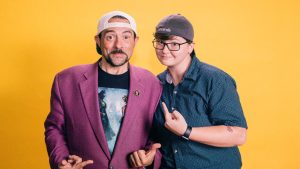
Kevin Smith and Sav Rodgers
HtN: Speaking of things that might be challenging to keep in the film, given the fact that this story originates in your TED Talk, and before that in your love for Chasing Amy, you yourself are an integral part of the story. Did you ever hesitate in terms of how much you were willing to put of yourself in the film and how much you were willing to put of your love story with Riley? And were there any hesitations on Riley’s part?
SR: Great question. I did not want to be in it at all at the beginning. I had set out to just make a documentary about the intersection of Chasing Amy and the LGBTQ community, but I think with any documentary, it evolves over time. And so, towards the beginning of the process, I conceded to the fact that, “OK. Well, I can be in it a little bit in the same way that Bing Liu from Minding the Gap was in his own movie.” And that is a linchpin for that story in so many ways in talking about masculinity and what it means to come of age, a beautiful film. And so, I thought, “OK, maybe my participation will just be like that, and we just get a little B-roll with me, and we just get a little bit of interviews with me.”
And as time goes on, you have to listen to the incredibly smart, intelligent people around you who are giving you feedback and giving you honesty and sharing their truth with you. And as they’re responding to cuts, I have to listen or else I’m not being a very good collaborator, am I? And so, while I did not set out to be in the movie, I’m glad that it all turned out the way that it did. And I think we can see that a little bit on camera, just how reluctant I was for some parts of this. As it pertains to Riley, she was game from the jump. She was like, “What is this? You want me to do what now? OK, great.” She is the most supportive, most wonderful person, charming, charismatic, and I’m so glad that people get to see her the way that I see her.
HtN: Can you describe your choices for colors in the background when you’re conducting the talking-head interviews?
SR: You are the first person to ask me about this, so I’m really excited to chat about it.
HtN: They’re so bright. How could I not?
SR: So, the talking heads for three-fourths of the movie are bright colors. I was trying to establish a visual look, and at the outset, I wanted pretty much all the colors to be representative of some color on the LGBTQ fight flag in some way. I may have used some additional colors that might have been represented on the original Gilbert Baker flag, another Kansas connection. But after the Joey interview, we kind of see that motif go away. And the next time that you see a talking head after that is the interview with me and Riley, which does not possess any of that. As I was reviewing cuts of the movie. I was like, “Oh, I’ve surrendered so much control.” The movie becomes so much more vérité. The movie becomes so much more free flowing in a lot of ways.
And so, the lack of that color pop at the end in that last interview, it’s more grounded. And that choice was intentional for it to not be just what we had seen before, another step in my evolution, if you want to call it. But at the beginning, everything is extremely controlled. We have three cameras, as Joey points out, and the big backdrops, and they’re bright colors, and it’s a very specific style. And so, as I feel more confident in who I am and my relationship to Chasing Amy starts to change, so does the visual style of the movie.
HtN: And for the record, I also did like that three-camera setup, so we see the behind-the-scenes machinations as well as the actual nicely photographed interviews.
SR: I really wanted people to see the artifice of the documentary from the outset. I knew the whole time that people would know that they were watching a documentary, and I knew that they would also know that they’re watching the process of a documentary being filmed. And so, I tried to marry those styles of like, “All right, we’ve got this clean shot here. In the B-angle, you can see the artifice start to fall away. You can see the C-stands. You can see what the actual house we’re filming in looks like. And you can often see the camera by my head as I’m conducting these interviews.” And so, that was all super intentional.
HtN: Speaking of intentions, I want to ask about the process of whittling this down, because I’m sure you had more story; I’m sure you had more threads. Was there anything that really broke your heart, after all this process of filmmaking, that just wouldn’t fit into the film as it evolved?
SR: I don’t know if anything broke my heart, but there is a very funny moment with Guinevere Turner calling Kevin “Ms. Kevin Smith” when she’s sassing him. That was a very funny moment, but it just didn’t fit into the rest of the movie. There’s so much good stuff on the cutting-room floor, I think, that talks about LGBTQ life, queer-cinema history, the new queer-cinema movement, Go Fish, more stuff on the history of Chasing Amy that just didn’t fit into the movie that we made. And so, I’d love to figure out something to do with that footage someday after a long, long, long, long time and some distance away from this and to be able to step away and do something new. But I think there’s some really good stuff in there that would be really fun for another project.
HtN: Excellent. Well, Sav, thank you so much for talking to me.
SR: Thank you so much, Chris.
– Christopher Llewellyn Reed (@ChrisReedFilm)

